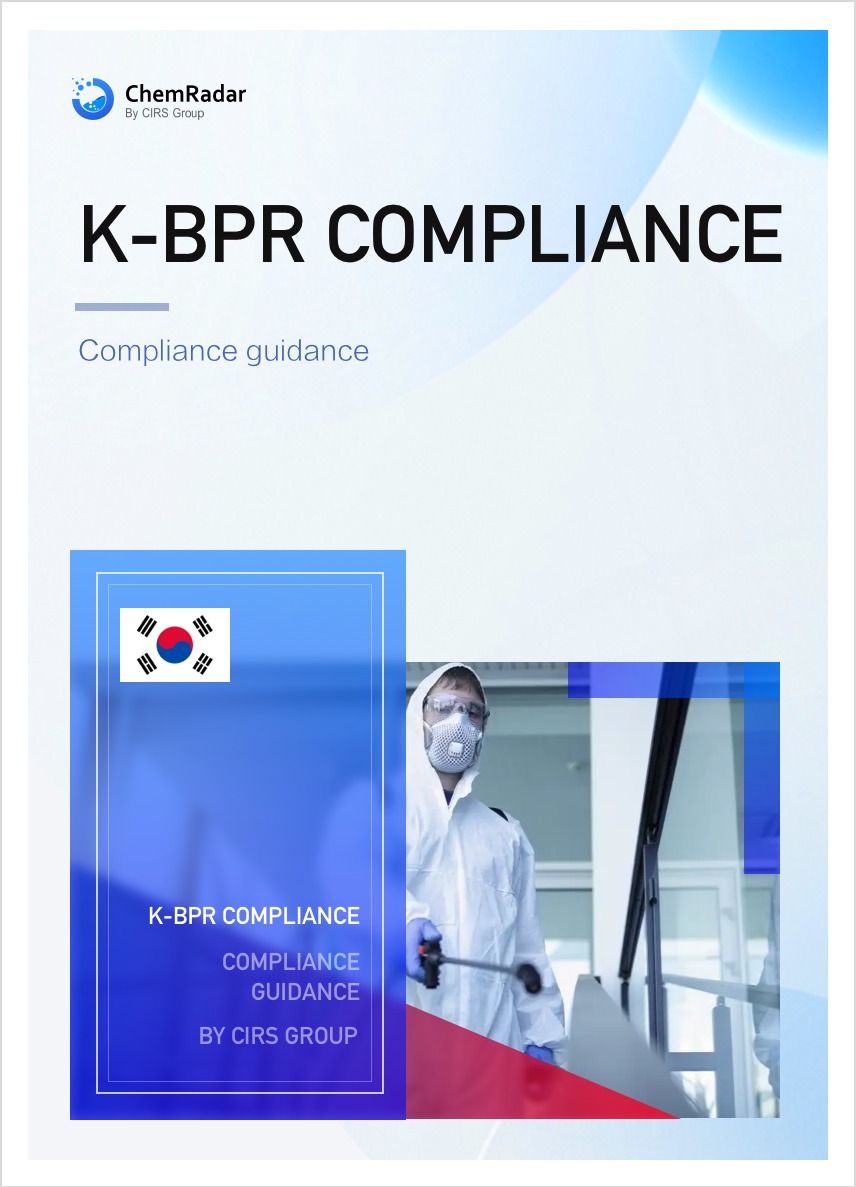7. Active Substance
7.1 Prior Notification of Existing Active Substances
Existing active substances need to be prior notified before production or importation to obtain a grace period. When conducting prior notification for the active substance, enterprises also need to confirm the product type of the substance. Depending on the product type, enterprises can obtain grace periods of different lengths (up to 10 years). During the grace period, enterprises can produce or import the active substances that have been prior notified without obtaining formal approval.

| Category |
Group 1 |
Group 2 |
Group 3 |
Group 4 |
| Grace period |
Dec 31, 2022 |
Dec 31, 2024 |
Dec 31, 2027 |
Dec 31, 2029 |
| Exposure |
High |
Middle |
Middle |
Low |
| Product types |
Disinfectants |
Control of other vertebrates |
Preservatives for product |
Construction material preservatives |
| Algaecides |
Control of other vertebrates |
Film preservatives |
Material and equipment preservatives |
| Rodenticides |
Wood preservatives |
Fiber and leather preservatives |
Embalming and taxidermist fluids |
| Insecticides |
- |
- |
Antifouling products |
| Repellents |
- |
- |
- |
If an enterprise needs to produce or import existing active substances for use in biocidal products, and the product has already been on the market before December 31, 2018, the enterprise needs to submit a prior notification before production or importation to obtain a grace period for existing active substance authorization. When submitting the prior notification for the active substance, the enterprise also needs to declare the product type (4 major categories, as shown in the table on the second page). Depending on the product type, the enterprise can obtain a grace period of different lengths (up to 10 years). During the grace period, the enterprise can produce or import the existing active substance that has been pre-notified without obtaining authorization.
7.2 Authorization of Existing Active Substance
Enterprises planning to produce or import existing active substances are required to submit relevant substance data and obtain authorization from the Ministry of Environment. Depending on the nature of the substance, the authorization for active substances is valid for 5-10 years. Enterprises must reapply for authorization before the expiration of the validity period. The data requirements for active substance authorization are as follows:
| Data requirements |
Joint submission |
Test |
| Basic information of applicant (CEO,commercial serial No.) |
|
|
| Substance information (substance name,CAS No.,composition,molecular formula) |
√
|
|
| Physic-chemical or biological property |
√ |
√ |
| Classification and labeling |
|
|
| Exposure information, such as use and exposure way |
√ |
|
| Raw material and manufacturing processes |
|
|
| Effect & efficacy |
√ |
√ |
| Health toxicology |
√ |
√ |
| Ecotoxicology |
√ |
√ |
Precautions and disposal methods for the handling of active substance
|
√ |
|
Usage and regulatory management in domestic and foreign countries
|
√ |
|
Comprehensive safety data for active substance (including CSR)
|
√ |
|
Representative product data for applicable active substances
|
√ |
|
7.3 Circulation and Post-Market Management
Report
Enterprises that manufacture or import consumer chemicals or biocides requiring safety confirmation need to report the following information to the Ministry of Environment annually (starting from March 31, 2020):
- Producers of consumer chemicals or biocides requiring safety confirmation: Names and quantities of products manufactured or imported; names and quantities of priority-controlled substances and active substances contained in the products.
- Manufacturers or importers of active substances: Names and quantities of active substances manufactured or imported.
Only representative (OR)
If overseas manufacturers or exporters wish to protect their commercial secrets and cannot provide substance information to importers, the importer cannot fulfill K-BPR obligations. To address this issue, overseas producers can appoint a qualified Only Representative (OR) to fulfill the importer's obligations stipulated by K-BPR. The role of the OR came into effect on January 1, 2021.
Filing and reporting
Enterprises that produce or import consumer chemicals or biocides requiring safety confirmation must report the following information to the Ministry of Environment every two years (by March 31st):
- Producers of consumer chemicals or biocides requiring safety confirmation: Product name and quantity in tons, as well as the names and quantities of priority-controlled substances and active substances contained in the products.
- Active substances: Names and quantities of active substances manufactured or imported.
The following information shall be filed for 10 years:
- Names and quantities of consumer chemicals requiring safety confirmation;
- Composition and mixture ratios of consumer chemicals requiring safety confirmation;
- Names, product names, and quantities of biocidal products requiring safety confirmation;
- Composition and mixture ratios of active substances in biocidal products;
- Names and contents of biocidal products used for treated articles.





